2023 BCRA Online Seminars via Zoom
In 2023, BCRA celebrated its 50th anniversary. It was created in June 1973 from a merger of
the British Speleological Association and the Cave Research Group of Great Britain. To mark this
occasion we hosted a series of online seminars that promoted the scientific importance of caves
and karst, and which described ways in which BCRA supports cave research. Some of these talks were
jointly organised by BCRA and the Ghar Parau
Foundation. GPF is a charity that provides grants to British caving expeditions throughout
the world. We also hope to run a series of seminars in 2024.
Click/Tap a link or scroll on down.
List of the 2023 Seminars
#1 — Mon 09 Jan ▼
Bath Houses and 'Stinky Bottoms': understanding deep karst in the UK from thermal spring chemistry
With: Prof. Simon Bottrell, School of Earth and Environment, University of Leeds
Time: Mon 09-Jan, 19:30 to 21:00 GMT.
To Watch: see Joining via Zoom.
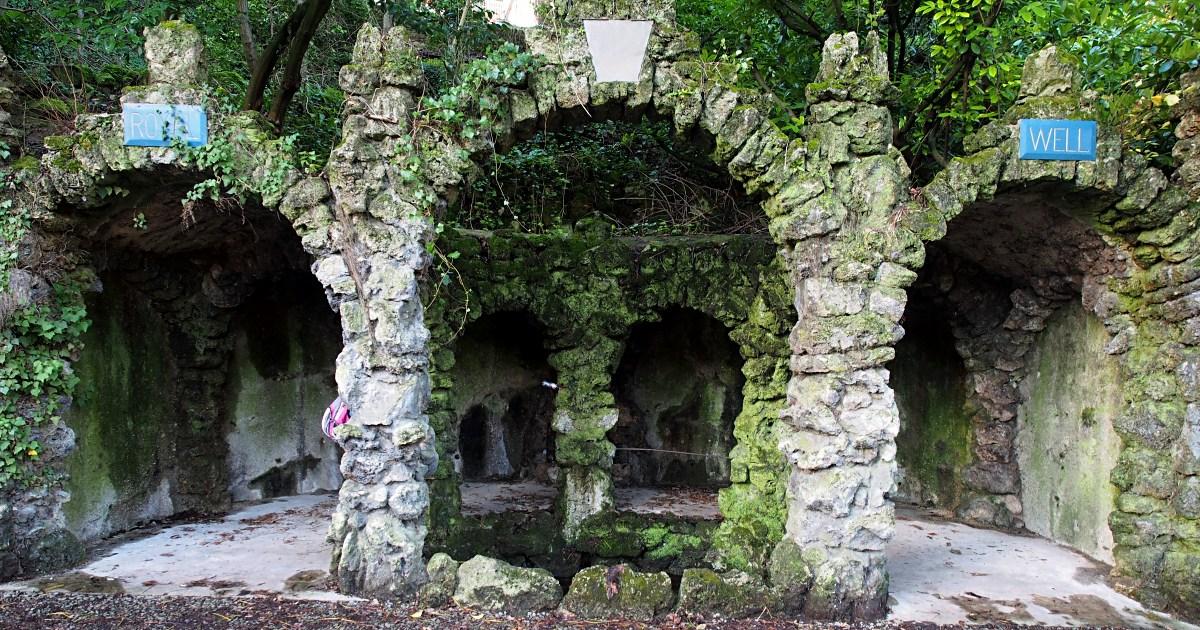
not used
Photo: John Gunn. Royal Well (aka Old Bath Spring), Matlock Bath, Derbyshire
Thermal spring-waters are relatively common in karst areas. Their thermal nature indicates that
they arrive at surface from considerable depth in karst aquifers and their chemistry provides a
window into processes occurring at those depths. This may give clues about the early, deep 'hypogenic'
development of karst systems that are otherwise difficult to study. This talk is based on a number
of studies of thermal and 'saline' spring-waters from Carboniferous rocks across northern England.
The data on the source and composition of the thermal and saline components are reviewed. This
dataset is then drawn together to emphasise some of the common themes that emerge across many
of these occurrences. Many of the springs are located at faulted anticline structures that seem to
provide preferential pathways by which deep waters reach surface. As a generalization, these spring-waters
acquire a characteristic 'unusual' chemistry via one of two pathways i) Interaction with highly soluble
evaporite minerals at depth – this has profound implications for early porosity development in these
aquifers; ii) Introduction of (often saline) waters from adjacent rock units into limestones – these may
link to sources of fluids that might drive early 'hypogenic' processes during karst aquifer development.
#2 — Mon 13 Feb ▲ ▼
Investigating rapid groundwater flow in the Chalk aquifer using tracer tests to public-water supply abstractions
With: Dan Matthews, PhD student, University of Leeds
Time: Mon 13-Feb, 19:30 to 21:00 GMT.
To Watch: see Joining via Zoom.
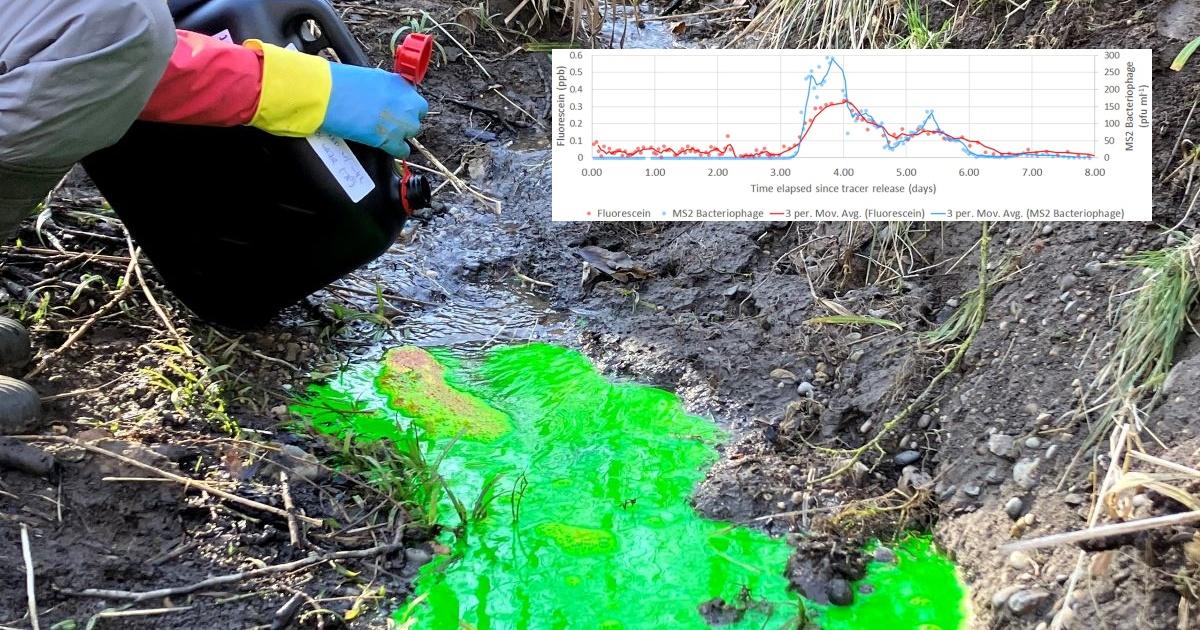
not used
Photo: Dan Matthews. Dye tracing in Deeve Wood, Hertfordshire in Feb 2023
The Chalk aquifer is the most important groundwater resource in the UK, supplying around 65% of the
public water supply in the south-east of England. Across the Thames Basin, sinking streams disappear into
the underlying aquifer, recharging subsurface networks of conduits and fissures capable of conducting groundwater
flow over 5 km per day. Previous studies of Chalk karst hydrogeology have focussed on characterising flow between
sinking streams and springs. The role of karst in the wider aquifer therefore remains poorly understood.
In this presentation, I'll use recent tracer tests to public water supply wells to explore the role of karst
away from main conduit networks, and to investigate its impact of drinking water quality. I'll also discuss
the challenges of tracing to public water supply wells and evaluate the techniques, such as the use of
bacteriophage tracers, employed to overcome these difficulties.
#3 — Mon 13 March ▲ ▼
Hypogene caves and karst: varieties and global examples
With: Dr. Alexander Klimchouk, National Academy of Sciences of Ukraine
Time: Mon 13-March, 19:30 to 21:00 GMT.
To Watch: see Joining via Zoom.
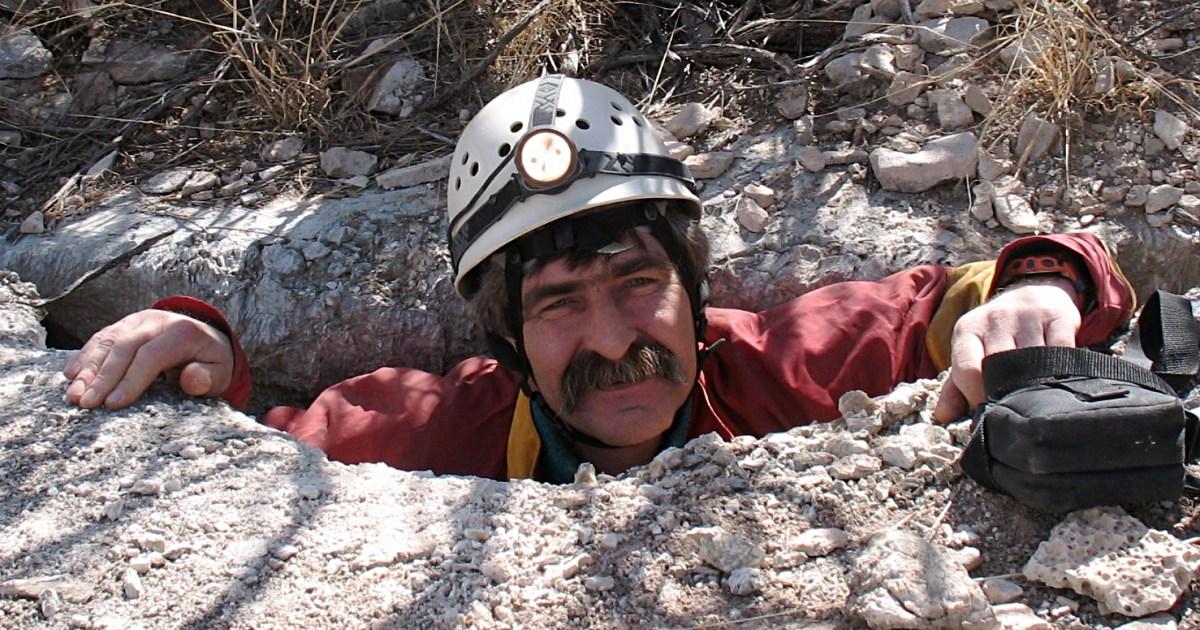
not used
Photo: Dr Klimchouk emerging from a cave in New Mexico
This talk highlights the peculiar features of hypogene karst and demonstrates the variety of its settings
and types by providing examples of hypogene caves worldwide. In contrast to more familiar epigene caves formed
by meteoric groundwater infiltrating from the surface, hypogene caves owe their origin to dissolution by
upwelling fluids that recharge the soluble formation from below, whereas fluids originate from distant or internal
sources, independent of recharge from the overlying or immediately adjacent surface. Hypogene cave systems include
some of the largest caves in the world, some of which are highlighted in this talk, as well as numerous other
extraordinary examples. Using these examples, the talk explains peculiar features of hypogene cave patterns and
morphology. As, by their nature, the accessibility of hypogene caves to humans is rather an exception than the rule,
their global presence in the upper Earth's crust is estimated to be huge.
Dr Klimchouk is a researcher at the Institute of Geological Sciences in
the National Academy of Sciences of Ukraine. In March 2022 he was awarded
Honorary Life Membership of BCRA in recognition his major contributions
to karst science and speleology and also as a mark of our respect for
the courageous stand of the Ukrainian people in the face of the Russian
onslaught on their nation. In December 2022 he was awarded a
"Researchers at Risk" Fellowship by the British Academy with Cara (the Council for At-Risk Academics) and is
currently working at the University of Manchester with Professor Cathy Hollis.
#4 — Mon 17 April ▲ ▼
Cave Science on Expeditions
With: Dr. Andy Farrant, British Geological Survey; Prof. John Gunn, University of Birmingham
Time: Mon 17-April, 19:30 to 21:00 BST.
To Watch: see Joining via Zoom.

not used
The Mulu Experience (Andrew Farrant). British cavers have been going to Mulu for the past 45 years. Many of those
expeditions have had an element of science, covering many aspects including hydrology, cave biology, geomorphology and
palaeoclimate. This talk will provide a brief summary of the science that has been done and will show how even simple observations
can lead to significant discoveries that overturn our understanding of caves. Exploration is not just about how much passage
you can survey, it is also about understanding the caves you find and the things within them.
Exploring cave hydrology (John Gunn). Active caves represent the explorable part of a complex hydrological system
in which the cave is fed, and sometimes drained, by inaccessible conduits. In relict caves there is no longer an active stream
but commonly there are inputs of percolation water. By observing the quantity and quality of water it is possible to gain
insights into where it has come from, and by using tracing agents it is possible to determine both where it has come from and
where it is flowing to. This talk will outline simple and inexpensive ways that cavers can gain information on the systems
they are exploring; and perhaps to use that to make new discoveries.
This event is jointly organised by BCRA and the Ghar Parau Foundation.
GPF is a charity that provides grants to British caving expeditions throughout the world. GPF was originally a sub-charity of
BCRA (although it is now independent) and it is also celebrating a 50th anniversary this year.
#5 — Mon 15 May ▲ ▼
Bats in Caves and Underground sites: World Edition
With: Jess Eades, Peak Ecology
Time: Mon 15-May, 19:30 to 21:00 BST.
To Watch: see Joining via Zoom.

not used
This talk is an introduction to why bats use underground sites. I will cover the various types of roosts that bats have and
the reasons why they might use different sites, or places within a single site, at various times of the year.
This session will cover some basic bat morphology to illustrate identification features that can be used to aid cavers
in identifying species throughout the world.
This event is jointly organised by BCRA and the Ghar Parau Foundation.
GPF is a charity that provides grants to British caving expeditions throughout the world. GPF was originally a sub-charity of
BCRA (although it is now independent) and it is also celebrating a 50th anniversary this year.
#6 — Mon 12 June ▲ ▼
Bones in Caves: Awkward Inconvenience or Hidden Opportunity?
With: Prof. Andrew Chamberlain, University of Bournemouth
Time: Mon 12-June, 19:30 to 21:00 BST.
To Watch: see Joining via Zoom.

not used
Photo: Nick Williams. Bones in Bull Pit
Recreational cavers are often the first people to discover and report new discoveries of archaeological importance in
caves. There is, however, uncertainty about procedures for ensuring that new finds are investigated, and how appropriate
conservation measures should be implemented. This seminar will outline the problems and opportunities that may arise when
cavers encounter bones in caves, and will be illustrated by case studies that provide some examples of best (and not-so-best) practice.
This event is jointly organised by BCRA and the Ghar Parau Foundation.
GPF is a charity that provides grants to British caving expeditions throughout the world. GPF was originally a sub-charity of
BCRA (although it is now independent) and it is also celebrating a 50th anniversary this year.
#7 — Mon 11 Sept ▲ ▼
Caves as Observatories of Groundwater Recharge
With: Prof. Andy Baker, Biological Earth and Environmental Sci., Faculty of Science, UNSW Sydney, Australia
Time: Mon 11-Sept, 19:30 to 21:00 BST.
To Watch: see Joining via Zoom.
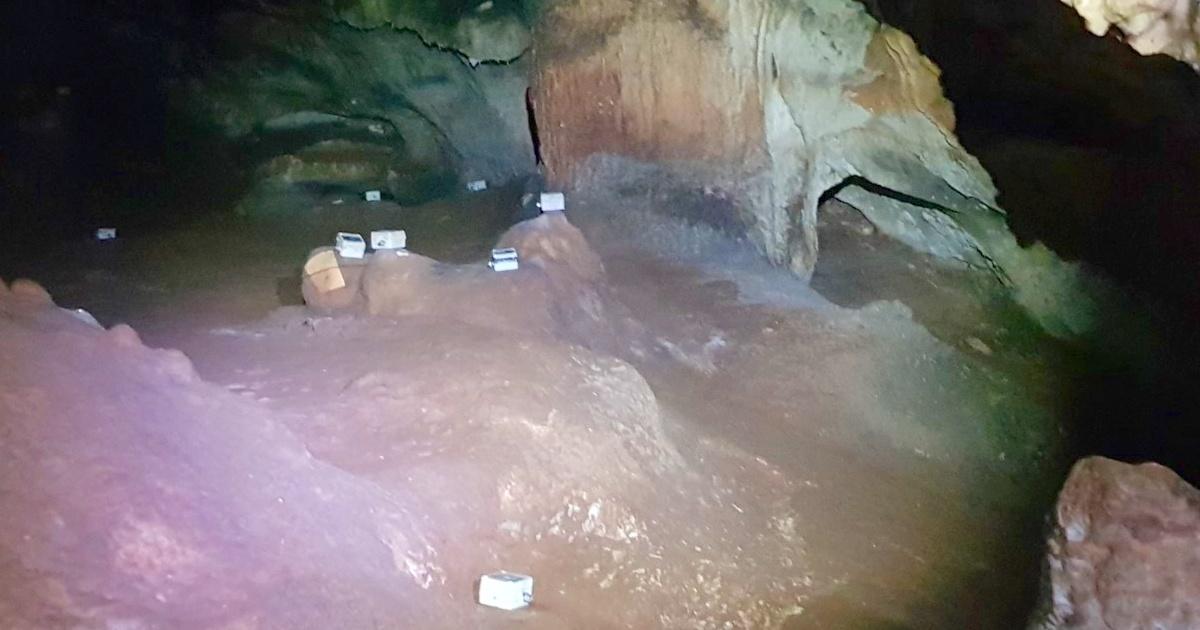
not used
Much of the world relies on groundwater as a water resource, yet it is hard to know when and where rainfall actually
replenishes our groundwater stores. Caves in the vadose zone are ideally located to observe water transiting from the
land surface to the aquifer. This seminar will show how networks of loggers deployed in Australian caves (and mines
and tunnels) have helped understand when, where and how much rainfall is needed to replenish the groundwater.
#8 — Mon 02 Oct ▲ ▼
Airflow and microbial mediation of aragonite precipitation in cave environments, with examples from Wind Cave, USA
With: George Breley, University of Akron, USA)
Time: Mon 02-Oct, 19:30 to 21:00 BST.
To Watch: see Joining via Zoom.
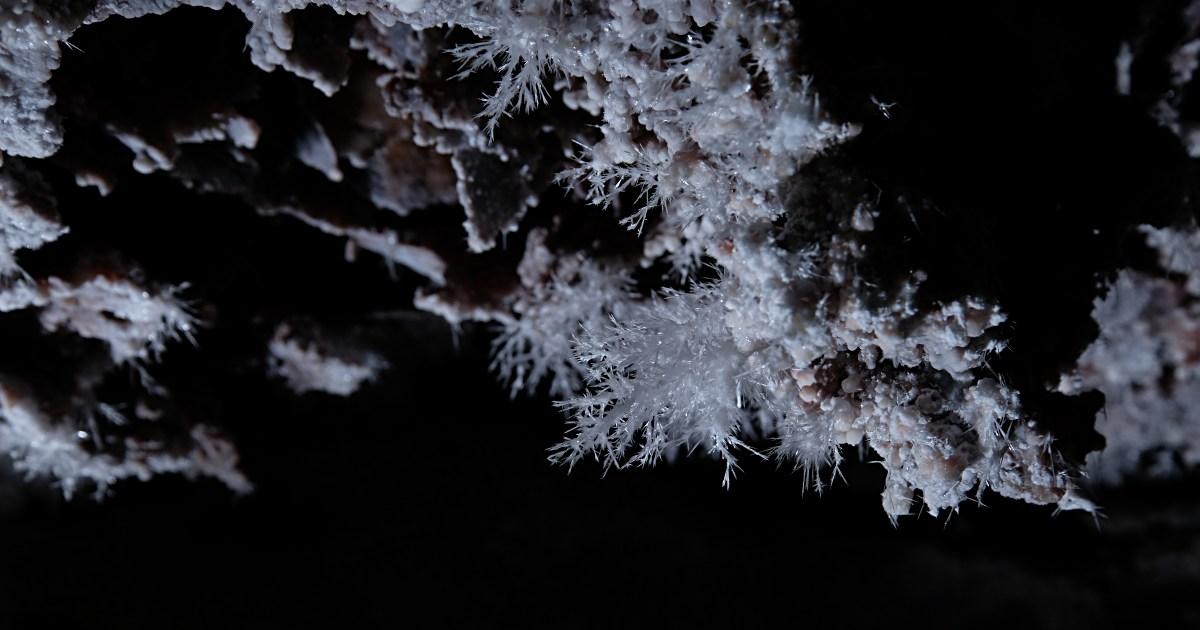
not used
Our understanding of the factors that influence carbonate mineralogy is continuously evolving. In caves, minerals
can precipitate both inorganically and as a consequence of microbial metabolism. Bacteria alter their environments
by producing biofilms, selectively favouring and inhibiting precipitation of certain phases and influencing crystal
growth kinetics. This geobiological interplay precludes straightforward assessments of biogenicity with regard to
mineral samples. Wind Cave, South Dakota, hosts an abundance of well-preserved frostwork; distinctive aragonitic
secondary mineral deposits. The cave offers a valuable site to investigate the environmental parameter set
governing mineralization and polymorphism. This study identified key factors driving aragonite frostwork formation,
evaluating the potential role of microorganisms as agents of carbonate nucleation, crystallization, and alteration.
SEM analysis identified recrystallization features and mineral assemblages of Si and Mg in association with aragonite,
suggesting a complex precipitation history yielding multi-aggregate speleothems. Observations revealed signs of
surficial bacterial colonization and biofilm coverage, opening up the possibility for a microbial component in
the formation of one or more frostwork features. X-ray diffraction showed sequential deposition of calcite, aragonite,
and hydromagnesite structures. Airflow monitoring and geochemical analysis were conducted to delineate climatic and
kinetic factors, respectively. Understanding the link between inorganic factors and microbiological processes controlling
CaCO3 polymorphism is foundational to the development of microbially induced carbonate precipitation (MICP)-dependent
biotechnology. This knowledge can be leveraged towards industrial carbonate production and CO2 sequestration
(George J. Breley, Hazel A. Barton)
#9 — Mon 06 Nov ▲ ▼
What is the water doing in the mountain? Research in caves on water storage and flow characteristics in Austria
With: Eva Kaminsky, Vienna Natural History Museum, Vienna University for Bodenkultur
Time: Mon 06-Nov, 19:30 to 21:00 GMT.
To Watch: see Joining via Zoom.
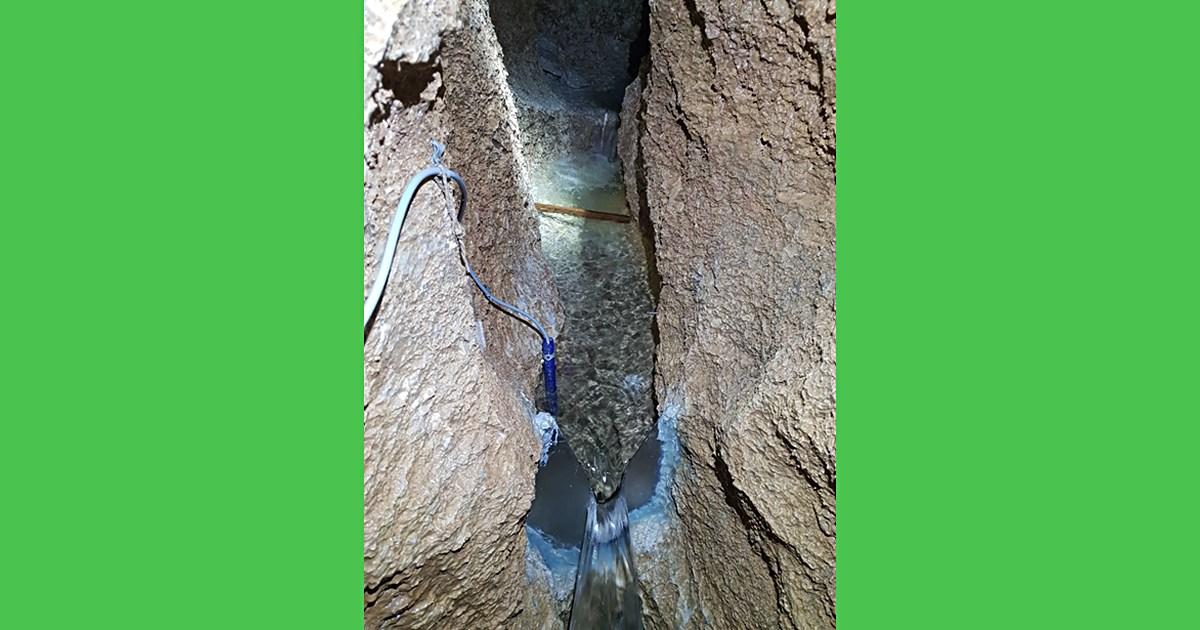
not used
Photo: Cave stream with weir in the Furtowischacht (Hochschwab)
In Austria, the Hochschwab plateau as a karst aquifer is one of the most important drinking water reservoirs for the
capital Vinna. Karst aquifers are highly vulnerable to contamination due to the rapid flow of water through the conduits.
Cave streams and karst springs can be used to characterize this flow behavior. This seminar will focus on the flow
dynamics and potential storage of water in the vadose zone on Hochschwab, where many caves are located.
#10 — Mon 04 Dec ▲
The past, present and future use of stalagmites in Geosciences
With: Claire Ansberque, University of Stockholm
Time: Mon 04-Dec, 19:30 to 21:00 GMT.
To Watch: see Joining via Zoom.
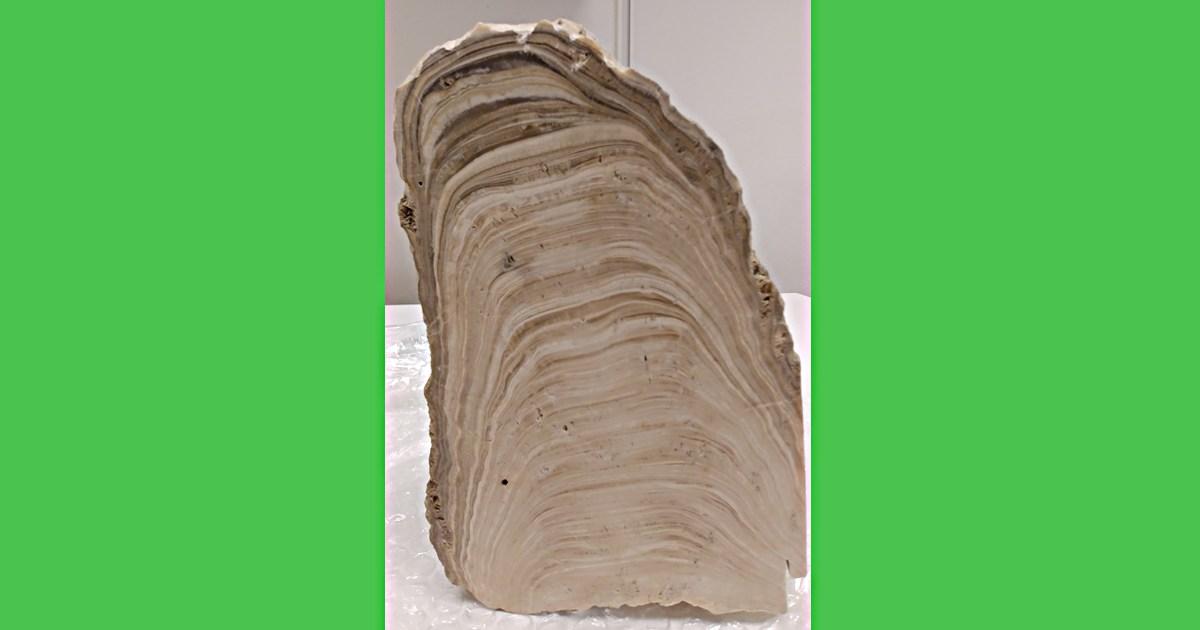
not used
Stalagmites are not only beautiful features emblematic of caves, they are also remarkably useful for advancing knowledge
in Geosciences. In this talk, I will present how stalagmites have thus far shed lights on past Earth climate and environments
as well as on the behaviour of our ancient relatives. I will also talk about the new research avenues opening up with the
development of genetic analyses directly applied on stalagmites; these analyses have huge potential for better understanding
the interactions between climate, ecosystems and diseases: a genuine concern in a warming Earth.
Using Zoom
See our latest seminars page for information about using Zoom
Seminars Archive
View talks given in 2021, 2022 (none), 2023, 2024.










